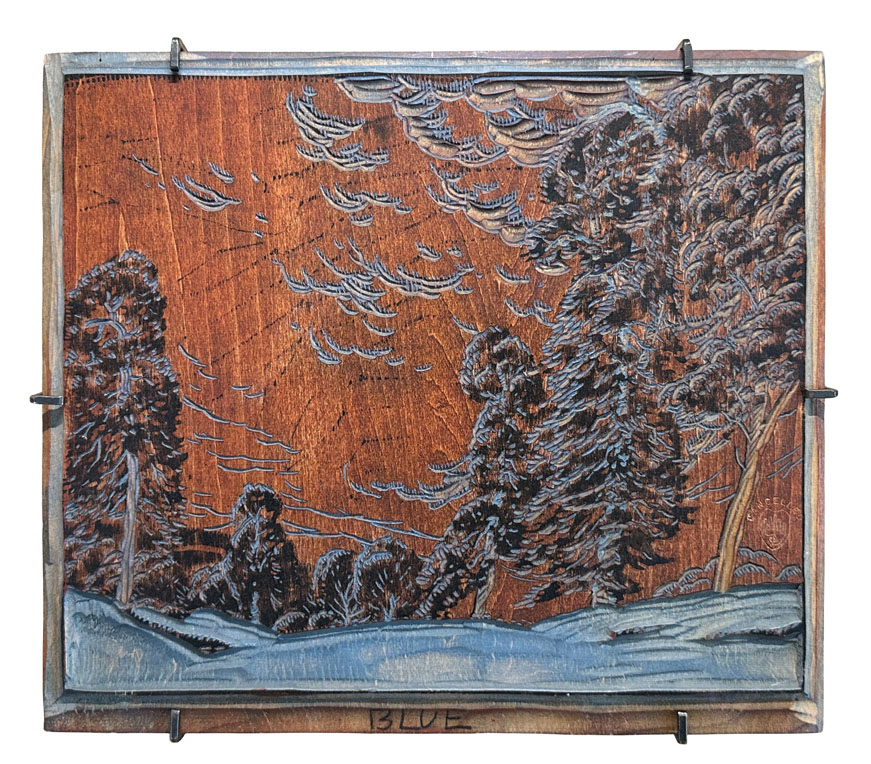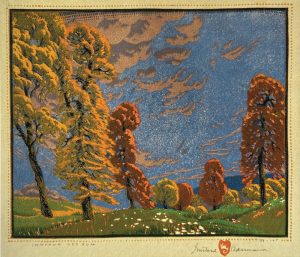
04 Jan Publisher’s Note: Gustave Baumann: America’s Woodblock Master
Gustave Baumann [1881 – 1971] was the consummate artist. A skilled craftsman, his meticulous woodblock prints have delighted collectors for more than 100 years.
The Indianapolis Star first quoted Baumann’s explanation of his process on February 21, 1913: “Draw directly on the block whatever you want. Then cut away whatever you don’t want and print what’s left.”
His woodblock prints’ painterly appearance makes them look deceptively easy, but they are anything but — a new block was carved for each color, then run through the press with the utmost precision to avoid blurring the image. As many as six blocks were carved for each print. Such was the case for the print shown here, Indiana Red Gum.
First printed in 1927, it had a few alternate titles, including In the Gum Trees, Indiana Gum Trees, and October Morning. From a projected edition of 120, the impression found with the highest number is 41.

Gustave Baumann | Indiana Red Gum | Color Woodcut | 9.375 x 9.125 inches | 1927 | Collection of New Mexico Museum of Art
In the spring of 1918, Baumann embarked on a journey to New Mexico, a trip he had contemplated for years. Encouraged by his Chicago friends Walter Ufer and Victor Higgins, he joined them in Taos. Baumann stayed in the art colony through the summer and, in October, left for the East with a stopover in Santa Fe to attend the opening of his exhibit at the Museum of Fine Arts. He was unexpectedly drawn to Santa Fe, which he found beautiful and welcoming. He canceled his plans to return to the East and took up residence there, staying until he died in 1971.
Baumann carefully preserved his carved woodblocks to reprint from them later. Stored on shelves in his studio, they stood upright on their edges like books in a case, organized and tagged with numbered stickers. His blocks had such beauty that they incited their own interest. Occasionally, they were included in his solo exhibitions and even appeared in some of the era’s landmark group shows of color woodcuts. Quite early in his career, Baumann donated a set of his blocks to the National Museum in Washington, D.C., now the Smithsonian Institution.
In September 1942, fellow artist Louis Griffith wrote to Baumann from Brown County, Indiana, “In about another week, I look for the fall color to begin. Summer is already started in the gum trees and sassafras. So when you come bring plenty red and blue. It will be fine to see you out on the hillside going after it as you did 20 years ago.”
Such was, and is, the power that Gustave Baumann’s woodblocks have always had to evoke a profound appreciation for the natural world.
Tim Newton, Publisher
tim@westernartandarchitecture.com






No Comments